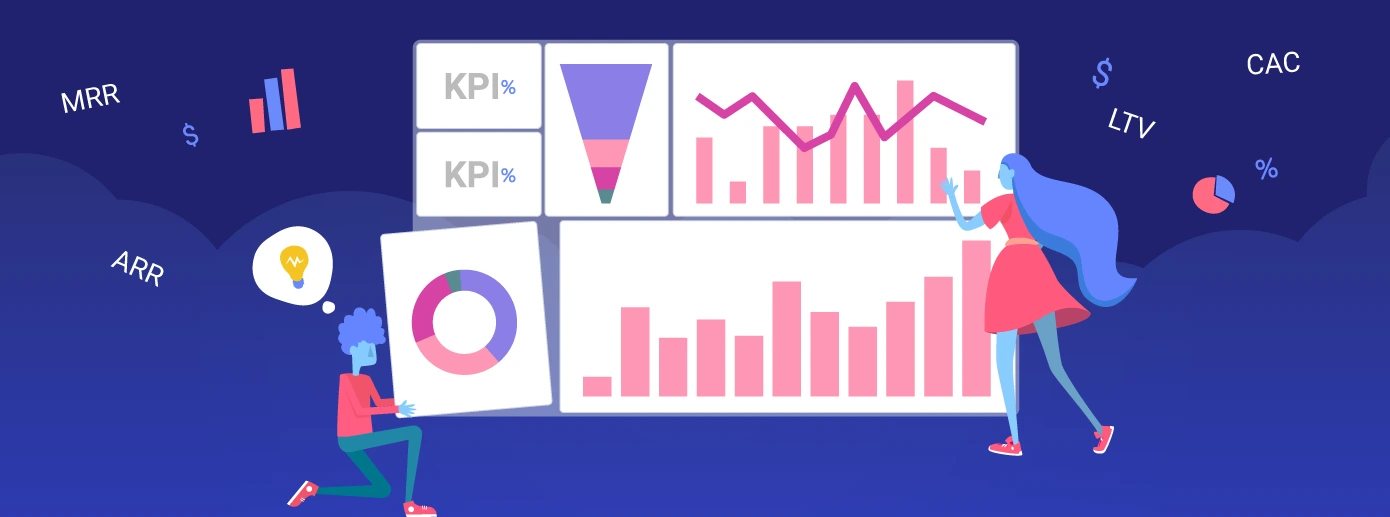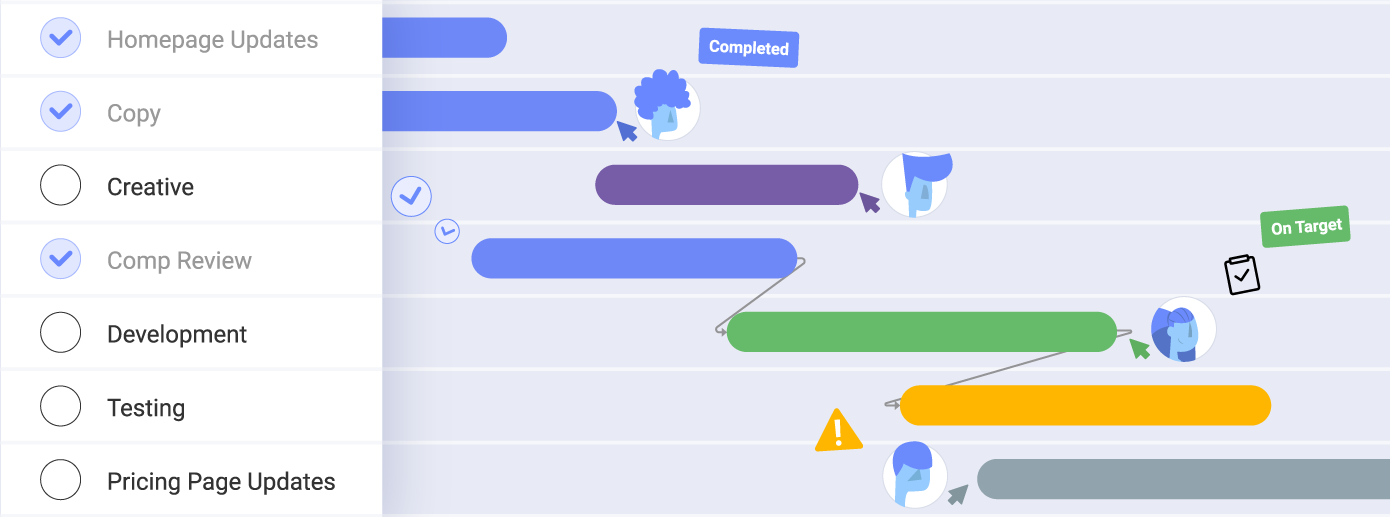
Data-Driven Decision Making: The Roadmap to Success
Are you still into the habit of basing a choice on a gut feeling alone? If yes, you are among those who rob their organizations from realizing their full potential. And you can trust me on this. Intuition, while often romanticized as a method for making "the right" decision simply cannot hold a candle to what data-driven insights can do.
Executive Summary:
Are you still into the habit of basing a choice on a gut feeling alone?
If yes, you are among those who rob their organizations from realizing their full potential.
And you can trust me on this. Intuition, while often romanticized as a method for making "the right" decision simply cannot hold a candle to what data-driven insights can do.
What is certain is this: data-driven decision-making provides value, identifies opportunities, and eliminates errors in judgment.
This article is here to help you build a data-driven decision making your organization, empower it, transform it, and lead it confidently forward.
Let’s dive in.
What Is Data-Driven Decision-Making (DDDM)
Data-driven decision-making (DDDM) is using data as the primary informant and as a strategy to base decisions on when it comes to business, goals, and initiatives. This method allows organizations to realize the full value of their data and empowers them to make better decisions with data, every day.
DDDM is not achieved by simply choosing the appropriate analytics technology to identify the next strategic opportunity.
Your organization needs to make data-driven decision-making the norm—creating a culture that encourages critical thinking and curiosity. People need to be able to access the data they need from everywhere, in context, balanced with security and governance.
Several approaches drive your strategic business decisions when you choose to employ data-driven decision-making and some of them are:
- Choosing business intelligence tools that help your DDDM by keeping data at your fingertips
- Using data points, metrics, and facts to inform business choices
- Making data accessible to everyone in the organization so that they can hop on the same strategy
- Grouping historical information and making judgments based on what’s worked in the past
- Using data smartly, in data visualizations so that people always understand and analyze it in seconds, sharing it with all relevant parties
All of these and more create a data-driven decision-making strategy that eliminates gut feeling as a factor and focuses on facts. And given that facts don’t ever lie, we can say each company basing its future steps on them has chosen the most stable stepping stone possible.
“By 2023, data literacy will become an explicit and necessary driver of business value, demonstrated by its formal inclusion in over 80% of data and analytics strategies and change management programs.”
Today, data and analytics are changing the basis of competition and improving the core operations of any organization while at the same time launching entirely new business models. Increasingly the role of data analytics is no longer a stand-alone discipline but a catalyst for digital strategy or transformation.
Why Data-Driven Decision-Making Is Important
Today, the amount of collected information has never been greater or more easily managed. Taking advantage of that seems only logical, but there are many reasons why. So why is DDDM so important? Let’s look at the main reasons.
Analytics is Mighty
Businesses have now realized that analytics is the secret weapon that helps them make a huge leap forward. New self-service tools, simpler integration of data sources, real-time reporting, interactive data visualizations – all of this and more create a new perspective for data-driven decision-making.
Аcting Upon Insights
DDDM is essentially making decisions with more accurate prognoses, so your team can make sure they stay on the right path and direct efforts in the best interest of the company. With this approach, insights can be acted upon much faster and businesses are much more adaptable.
Transformative Impact
With analysis, the decision-making process has a transformative impact on organizations, bringing smarter strategies and reliability. Illuminating the right direction by relying on data and removing gut feelings as a leading factor is what data-driven decision-making is all about.
In the process of making data-driven decision-making, many approaches are used across companies, including, but not limited to:
- Collecting data based on measurable goals or KPIs
- Analyzing patterns and extracting valuable and relevant conclusions
- Gathering facts from insights and basing strategies on them across all divisions in the company and across all teams regardless of their function
- Using the data as a central adviser in the decision-making process
Choosing data as a strategy and making it the fundamental frame of reference in selecting the way ahead is what data-driven decisions are all about.
Benefits of Data-Driven Decision Making
One of the main benefits of data-driven decision-making is that it helps an organization make sensible choices rather quickly, which can improve business outcomes and save money.
Data-driven decision-making leaves no room for experimentation, so the potential risks become insignificant. There is a study by MIT professor Erik Brynjolfsson who has discovered that companies that embrace data-driven decision-making have output and productivity that is 5-6% higher.
But if you’re still wondering if you should take this approach, let’s take a look at more of the benefits for companies choosing to build a data-driven decision-making process:
Confident Decisions
When you can better understand the impact of your decisions, you will be more confident in making them.
Proactive Teams
Data-driven insights can help you identify business opportunities, detect customer journey leaks, and proactively identify weaknesses in your product roadmap before they grow into serious problems.
Achieved Longevity
With regular insights into market changes or trends, organizations become more agile and can pivot and maximize their resources for success.
More Alignment
Keep everyone in your organization is in the know, and aware of company goals, and customer satisfaction. All through data transparency and accessibility.
Answering the Why
Through DDDM, organizations gain a deeper insight into customers’ journeys and identify funnel leaks and success points to drive acquisition.
However, these benefits don’t just happen. To unlock them, you need to truly establish a data-driven decision-making process.
Steps to Building a Data-Driven Decision-Making Process
If you want to foster a data-centric ecosystem that constantly leans on DDDM to enhance performance, you’ll want to focus on the steps in making data-driven decisions and follow them with consistency.
Step 1: Go from the top down
If a data-driven mindset isn’t embraced by a company’s leadership, it’s unlikely it will filter down to the rest of the organization. This is because adopting a data perspective involves significant changes to how each part of a business operates.
To make sure the strategy for data-driven decision-making is adopted in every corner of your company, it needs to come from the top. The executive team now must involve data in discussions and build tasks and projects around it, including the team in the process.

Step 2: Build trust and transparency
Trust is another important principle in data-driven decision-making. All parts of a company, from the workers through managers and up to executives, must trust that the data is accurate and has access to it.
This is facilitated by a single source of truth, a source that everyone trusts so that colleagues avoid the “he-said-she-said” trap and reduce time spent hunting for data. Keep it all in one place.
Step 3: Commitment is key
Building data-driven decision-making cannot be a set-it-and-forget-it process. It depends on a long-term commitment from everyone in the organization. To ensure this commitment long-term companies must:
- Ensure analytics ties back to critical business efforts
- Make sure team goals are always present for gauging team performance
- Invest in a tool that keeps data ever-present
- Always look at metrics that matter
Step 4: Choose the right KPIs to measure success
If you measure the wrong KPIs, you’ll never get the answers that you need.
Step 5: Expect data to be involved in all decisions
The real goal is to turn that data into “actionable insight” and here are some questions to help you see what you need to achieve it:
- What tools do you currently have or need to acquire?
- Is data readily available? REST APIs, Odata, direct connections?
- Does my team understand data visualizations?
- Does my team use data visualizations?
- Can we do effective Data Storytelling?
To achieve truly meaningful adoption and usage of data, find a way to promote a data-driven decision-making process in your organization at every turn.
Data-Driven Decision-Making Examples
The decisions that we make every day for our products and services are endless. How can you make sure that before these decisions go into action that they are data-driven?
Here are three examples of DDDM:
Using Data to Shift Marketing Funds
Make sure that your budget choice is based on the search volume for target keywords, historical leads for your product or service coming from that territory, conversion rates from leads to new seats, and more. Don’t shift the marketing budget off gut instinct or one conversation.
Using Data to Improve Product Experience
Take a look at your product’s or app’s data to see where people are getting stuck the most or maybe aren’t even using certain features – so you can react accordingly and improve their experience.
Using Data to Make a Change to Your Website
Well, don’t just make changes just cause you think they are a good idea. Run A/B tests and look at the data. That way you provide users with different experiences and then can see what versions and experiments perform the best and make your decisions based on that.
How Slingshot Enables Data-Driven Decision-Making
If you’re wondering if there is a magic wand that brings all we talked about so far seamlessly together – the answer is: no.
There is, however, a magic application.
Slingshot is the only digital workplace that serves as a uniting tool for whatever type of data-driven strategy your company needs, plus team collaboration. By combining all necessary mechanisms so an organization can thrive in projects, minimize risk, and have all project and/or progress information at a glance, the app simply makes things better and more effective, with no disruptions.
Here is a quick overview of how Slingshot integrates into the idea of data-driven strategy within an organization:
- It eliminates the need for multiple applications usage that are not always well-integrated
- It diminishes the danger of desynchronization between team members
- It presents a project’s progress, goals, stages, and analytics at each point of its development with one glance
- It unites all of your digital assets in one application and allows you to share them with team members as well as with outside collaborators with ease
- Works with Office 365, and Google Suite and is infused with AI so it takes your data to the next level and helps teams go from insights to action in a matter of seconds
Slingshot is simultaneously a business intelligence tool that provides you with dashboards and analytics, a chat platform for easy collaboration, a project management software, and a planning tool for the team, helping with ownership, division of tasks, and keeping tabs on progress and/or issues.
Connecting to the data in a meaningful way leading to actions has never been easier. And that is, ultimately, what data-driven decision-making is all about – putting facts at the forefront in an intelligent way, with analysis, creativity, and drive for success.
Related Articles
Ready to grow your business 10x with AI decision-making?
Request a Free Demo of SlingshotSHARE THIS POST







